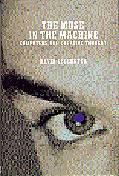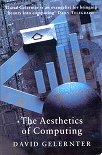Gelernter's thesis is that the goals of the Artificial Intelligence programme cannot work, because AI misses out a crucial form of human thought, different in kind from our symbolic, analytical thought. He explains that our thoughts fall along a 'focus' spectrum, from high focus analytical thought, through low focus, analogical thought, and even further, to dreaming. And it is only when we engage in low focus thought that we can make creative leaps.
So far, so good. But he then says that thought at the low focus end of the spectrum is necessarily emotional, and that since emotions require a body to experience them, that AI cannot work without embodiment. Here I disagree with his first step: from introspection, my own low focus thought (which I now no longer have to call 'woolgathering') does not seem to be emotional. Whenever I have recreated a stream of low focus thought, I have always found linking events that make sense without having to invoke an emotional explanation. In particular, whenever something "breaks my dream", it is always a common event, never a common emotion, that does so.
I am sympathetic to the idea that intelligence requires embodiment. It may be the case that in order to develop certain kinds of intelligence we need to be situated in and interact with our environment in complex ways involving a lot of feedback loops. [For example, some hearing children of deaf parents had access to a TV, but never interpreted the sounds as speech. This could be due to the lack of feedback: lots of things make noises; maybe it's because those noises change in response to noises we make that we realise they are interesting and important noises.] But I remain to be convinced that any need for embodiment is due to a need for an emotional response.
However, Gelernter's idea of a spectrum of thought is interesting. Especially the idea that creative, low focus thought can be encouraged by engaging in an activity that precludes high focus thought: all of one's concentration is required for high focus thought, so if some concentration is engaged in performing some routine task, such as driving, then low focus thought is the only remaining possibility. This may explain why I sometimes have good ideas while playing 'mindless' computer games!

